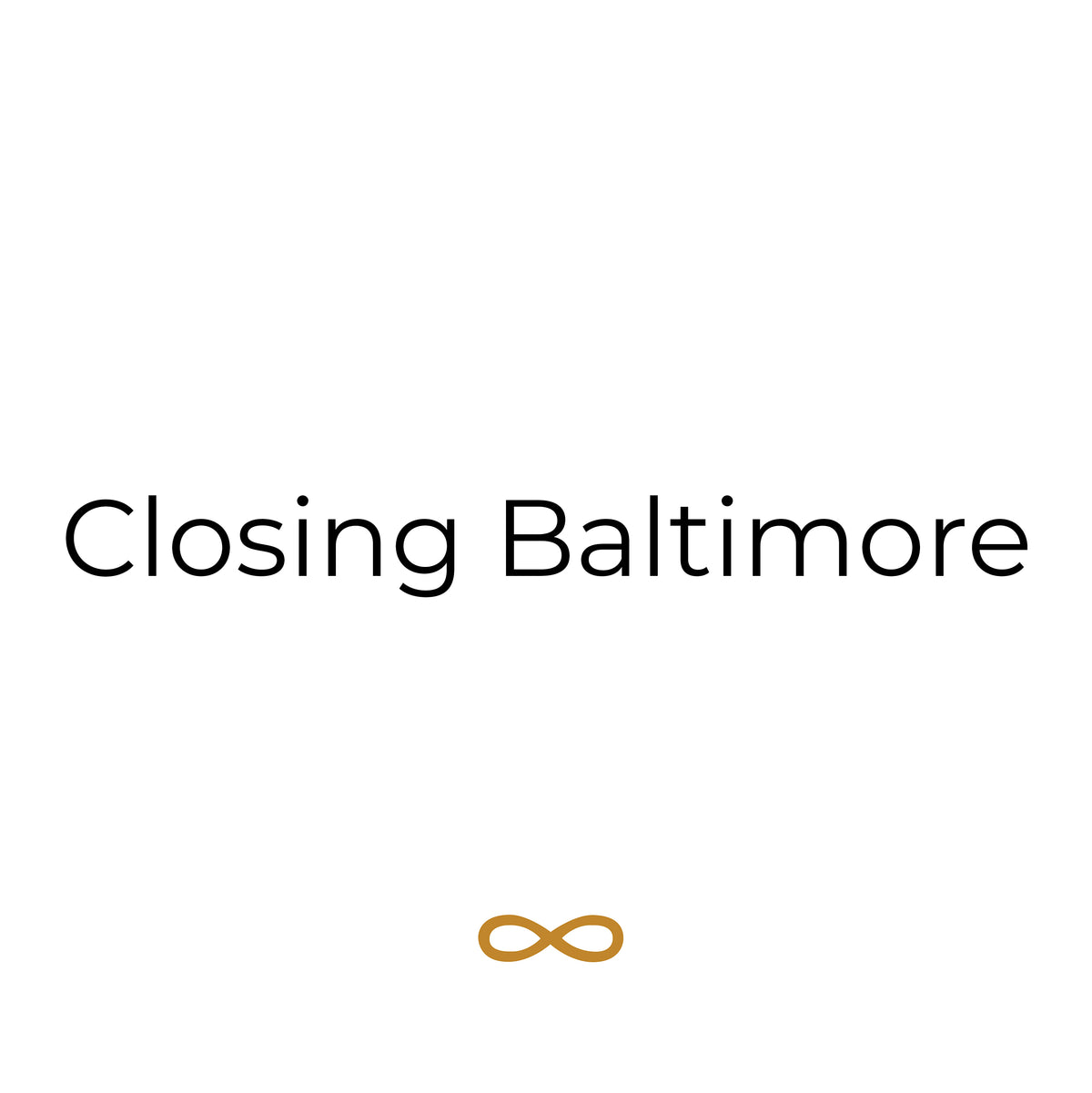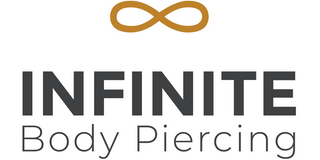
Closing Baltimore
After less than four years open, the Baltimore location of Infinite Body Piercing closed on November 21 of last year. The studio was shuttered suddenly and with little notice, and we haven’t spoken publicly about the closing, nor have I been forthcoming with details with the staff at the Philadelphia location. This post serves to break that silence.
Last week, one of our client email lists was used without our permission or knowledge by a former staff member at our Baltimore location. In the message sent out, many statements were made about working conditions at our Baltimore studio, and reasons around the ultimate closing of that space. As the owner of the studio, this is my account; this is why I closed the Baltimore studio.
Please keep in mind that the Philadelphia staff was not aware of or involved in the decisions affecting the Baltimore closure, so please don’t direct your anger at them as they see clients and oversee our online presence. Any comments can be sent to me directly at james@infinitebody.com
Charges of Racism
When we opened in Baltimore, I was determined to have a staff that was representative of the area in which we were located. By 2022 my shortcomings as a white manager of a prominently Black staff had become obvious. This came to a head with instances where I dismissed several interstaff conflicts as personality clashes, blind to the racial implications inherent in them.
In late 2022, I contracted with Baltimore Racial Justice Action (BRJA) as consultants to help me navigate through this issue. Over a year they worked with me and the larger Philadelphia and Baltimore management team to affect long-term change in our corporate culture and structure at Infinite. We made structural changes to the positions and roles within the studio, some of which came to fruition during this time and some that we were working towards as our teams expanded. We addressed issues of cultural appropriation and looked to identify implicit bias in the culture and policies of the studio. We discussed hiring and marketing strategies, firing strategies, and what our responsibility is as a studio in an industry that has a history of lack of access and gatekeeping. I still stand behind the work accomplished (even if it is understandably seen by many as too little and too late), and acknowledge that there is more work to do, as I and the studio still fall short in many of these areas today.
I made many mistakes during this process, and I own our shortcomings—which as the owner of the business are ultimately my shortcomings.
Safety of Staff
In the Baltimore studio’s short history, the front window to the studio had been broken twice (once in the middle of the afternoon, with clients in the studio), we had an attempted night-time break-in through the glass front door, and about a month before closing the Baltimore staff were the victims of an armed robbery. All of these affected the feeling of safety at the studio, but none more so than the midday robbery.
The robbery took place on a Saturday afternoon in mid-October, shortly after opening, with almost the entire staff there that day—me included. In hindsight, we could have been better prepared, and I take responsibility for this. All employees at hire are instructed on the location of the panic buttons in the studio, and in the case of a robbery to comply with handing over anything requested during a robbery, but we have never needed a more intensive protocol. In the aftermath, everyone struggled to sort through their (often overwhelming) emotions, and no one really knew what they needed—including me. We closed for two days and then opened the following Monday. We debated closing longer, but there were several on staff who felt the extra time off was making things worse.
We did what we could to safeguard the continuing mental health of the staff after the robbery. Many found they were unable to work and took days off, and this time was offered open-ended and paid. We had almost-daily check-ins with everyone on staff. Sourcing an outside therapist for group sessions was discussed, but ultimately decided against, as one staff member who was a former bank employee found it to be ineffective (and borderline patronizing) in her past robbery experience. We saw to it that staff without professional mental health support were given referrals, staff with therapists were encouraged to use them, and staff was consistently told if money was an issue that Infinite would offer a stipend for mental health care.
Looking back, I don’t think anyone realized how bad the long-term effects would be. This affected not only morale but the trust of the staff that they would be safe at work. Ideas were discussed to improve the feeling of safety at the studio. At one of the last meetings before closing, covering the windows and individually buzzing in clients was proposed, and I pushed back on those ideas, as I felt they would be too much of an intimidating barrier for prospective clients. While I don’t think these would have prevented what happened, they could have helped to affect the lack of safety felt by the staff. In hindsight, I could have followed through on this request—and should have.
Gaza Statement
Things were tense after the robbery, and came to a head several weeks after the October 7 attack in Israel.
During one of our Friday meetings in early November it was put forth that since we are anti-racist, we would naturally be making a post about our support of Palestinians in the escalation of the continuing conflict. This conversation went on for a bit during the meeting before I responded. I understand that there are people who don’t have the choice of being involved in this conflict, but I was hesitant to bring the studio into territory where the discussion around it online was often used as a forum for hate and prejudice. I stated I didn’t feel we should be making such a post. Most were incredulous: it was said that not posting anything was a “betrayal of our anti-racism training.” Everyone left the meeting angry.
I questioned whether I was wrong to be pushing back on making a statement, and later that day told the staff I would work on drafting something up. I worked with a small group of Baltimore and Philadelphia employees to put a statement together, one that focused on the humanitarian crisis and encouraged our followers to help with relief efforts.
In reflecting on that experience today, as I write this, I can see the ways in which I fumbled this process, missteps that ultimately led to emotionally charged reactions from many of us involved—and not charged because of the content of the post itself, but because of the experience of trying to navigate such a heavy topic. Every word must be chosen carefully, not because the message is unclear, but because everyone on staff would be subject to answer to what was contained in it.
I share the belief of much of the staff that Infinite has an opportunity, and even a responsibility, to work toward progressive change with our media outreach, but on this issue my responsibility was to make sure the staff’s safety and sense of well-being was not compromised by a well-meaning social media post—not to mention possibly alienating clients as well. It was the difficulty in navigating this statement (and the consequences that came from it) that ultimately led to my decision not to publish the post, and to my actions in the Baltimore meeting that followed.
Final Meeting
At our final Friday meeting, I told the Baltimore staff we would not be posting about the conflict in Gaza after all. I was told again that not posting in support of Palestine was a symptom of racism operating in the studio, and told that my personal opinions were not in line with those of the rest of the staff. My refusal to post about Gaza was, and has continued to be, referenced by former staff as a manifestation of my racism.
That day, I also gave the staff an ultimatum: I said to each of them that they need to decide if they want to continue to work here, and decide by the time we open the doors that day. I told the staff I was tired of feeling like a outcast among the people I employed, and that I could no longer be a punching bag for everyone to work out their feelings. Even though I was the boss, with all the power and privilege that comes from my position—including my age, gender, race, and background—I was human as well, and the staff needed to at least treat me as a person.
I was angry and tired and saw no way out. I was done. As the meeting adjourned everyone was emotionally reeling. Tensions were so high that the studio didn’t open that day, and appointments were called to reschedule.
Closing
The public statement wasn’t the issue; it was simply the last straw in an already deteriorated environment. I had a staff that didn’t trust me and blamed me for the lack of perceived safety in the studio (some deserved), with no resolution in sight.
I was the one who made the call to close. This decision was mine, and the timeline and implementation were mine as well. I take responsibility for this.
The staff was sent an email on the morning of November 21 that the studio had been closed, effective that same day. Everyone employed at the studio was given five weeks of pay, all remaining sick time and vacation time was paid out, and health insurance was to be provided until the end of the year. Staff with personal belongings at the studio were given time to pick up their items several days later. Since the relationship between the staff and me had become so contentious, I hired a security guard to be present as a neutral third party. I specified that the guard be in street clothes and unarmed (it was someone from the staff who brought a uniformed and armed Baltimore City police officer) and the staff collected their belongings without incident.
I traveled to Philadelphia the next day to address the staff there about the closure of the Baltimore studio. I could have (and in hindsight should have) been more forthcoming with the sequence of events that led to my decisions, but instead said only that the studio had closed because we did not have the resources to keep it open. This left the employees in Philly in a confusing position at best, as they were now faced with having clients and other industry friends asking what happened. Because I wasn’t forthcoming with the reasons for the closing with my Philadelphia staff, they now find themselves at the center of controversy that was not of their making.
Like many of the staff, I relocated to Baltimore for the studio five years ago to start something new, and I am deeply saddened by how things ended. I apologize to all who have been affected by the decisions I've made with the Baltimore studio: for my part in contributing to what was an unsafe work environment, and for my part in how everything ended.
Lastly, my apologies to my Philadelphia staff for my lack of transparency. I have trust to mend with you all.
James Weber
Infinite Body Piercing

Leave a comment